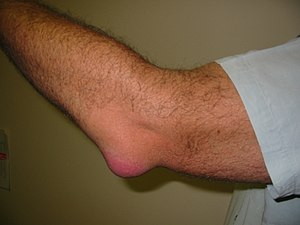|
BOOK NOW |
ASK ABOUT YOUR PAIN |
Home > Blog > Bursitis and Physiotherapy
Bursitis and Physiotherapy
We have hundreds of bursa all over our bodies, located usually at places where the surfaces of muscles and tendons glide over bones.
The main functions of bursa is to decrease the resistance and friction between two surfaces and improve glide/gliding movement.
Bursitis is the inflammation of the bursa in our body, decreasing its gliding capability (locking/painful gliding), as well as becoming tender and painful with touch and movement.
What causes bursitis?
Bursitis is usually and primarily caused by
- repetitive trauma eg repetitive movements/strain
- external trauma (eg being hit/falling on bursa)
- pressure on the bursa over time etc
The mechanism is usually trauma (hit/force/pressure) > that leads to swelling > that leads to inflammation, pain and swelling in the bursa > causing the bursa to lock/glide improperly > learning to more inflammation, pain, tenderness and swelling in the bursa.
In some individuals, there can be conditions that exacerbates the injury, such as arthritis.
What are the usual symptoms of bursitis?
At Phoenix Rehab physiotherapy clinics, we diagnose bursitis by the following observations and findings:
- The bursa / area around bursa feels warm, swollen, tender and painful
- There is discomfort and pain with movements associated with the bursa
In some cases, the inflamed bursa can become infected, especially when it is injured again and again and again without being able to properly heal.
Signs of bursa infections can include:
- warmness, swelling around the bursa
- presence of open wounds near the bursa
- persistence fever
If you suspect you have a bursa infection, please see a physician immediately.
bursitis Physiotherapy Treatment
Interventions with our senior physiotherapists always begins with the correct and proper measures to protect your bursa from additional damage and additional reinjury - as and where necessary, we may prescribe for your joint to be protected and splinted to protect your injured bursa.
At least until the inflammation, swelling and tenderness decreases.
At the same time, if it's very acute and inflamed, we may refer you to see an orthopedic surgeon to discuss medication (some anti-inflammation medicine can be very helpful to take down the swelling and pain) to be done concurrently with physiotherapy with us.
During this stage, physiotherapy and intervention are focused on:
- ultrasound therapy to accelerate soft tissue healing
- retrograde massage to accelerate dispersement of fluids to decrease swelling and edema
- protective range of motion exercises to gently glide joints, tendons, muscles and ligament to prevent stiffness in- and out-side of the joints
Once the bursitis acute and inflammatory stage is cleared, then we will then progress onto more active stages of physiotherapy, which is the above but added with:
- active range of motion exercises (mix of protected and gentle mobilizations)
- education to prevent further injuries and re-injuries
As the bursitis improves and pain and swelling decreases, we will gradually move onto strengthening and resistive exercises to improve:
- muscle strength and stamina
- joint stability
Usually there is very little active exercises until the inflammation stage of bursitis has cleared (if not, it may keep triggering the cycle of pain and swelling, prolonging the injury which can cause other conditions).
If the cause of the bursitis is mainly due to conditions such as arthritis (eg gouty arthritis, rheumatoid arthritis etc), then physiotherapy intervention is different - tends to be much more conservative and gentle to prevent aggravation of the condition.
